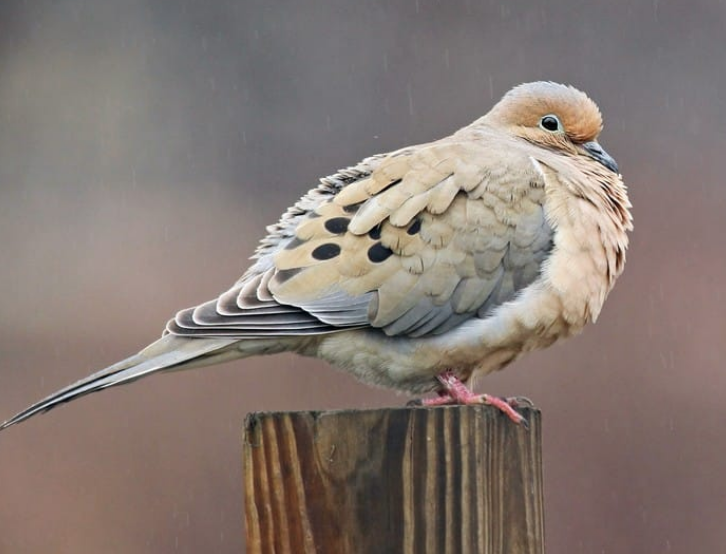Contributed by Bill Hamilton
This past January, during a sunny afternoon right in the middle of a winter thaw, I looked out my back window and noticed that the ground was moving about. The brown, leaf covered surface of the yard was undulating right before my eyes. I blinked and focused on the leaf surfaces and finally saw the drably colored, brown bodies of about 40 Mourning Doves head-bobbing their way around each other and around the yard.
They were actively pecking at the ground, so, I presume, they were consuming seeds. They seemed to be congregating in the spots of more intense sunshine, and a few settled down on the sun-lit leaf piles, pushing the leaves up around their sides as they settled in, making what could only be described as temporary, afternoon nests.
Mourning Doves are regulars at my bird feeders all winter, but I had not seen this many all gathered in one place, not had I seen this much socializing among individuals. There was a regular pattern of face to face head bobbing and body angling in close contacts in passing. A great deal of communication was going on.
The call of the male Mourning Dove is, to me, one of the most relaxing sounds in nature. Their “coo-OOO-ooo-ooo-ooo” is sad and melodic and seems to ask question after question as it rolls past. I remember hearing it early in the morning when I would stay at my grandparents' farm in northwestern Iowa. The day was already getting warm even though the sun had just risen, and the doves were abundant down in the woodlot near the barn.
I have seen Mourning Doves everywhere I have lived, from Texas to upstate New York. They are one of the most widely distributed birds in North America, and also one of the most abundant. In 2017. mourning doves were listed on 47,076 checklists for the Great Backyard Bird Count (they were the third most frequently listed species in the count!), and their North American population is estimated to be between 100 and 475 million individuals!
This large population is maintained by a robust reproductive effort (two eggs per clutch and up to six clutches per year for a mating pair) that compensates for a very high mortality rate (58% of adults die in a given year, and 69% of nestlings and fledglings). Many predators take Mourning Doves. Their tendency to feed on the ground exposes them to mammalian predators (especially cats), and their tendency to fly in straight lines makes them vulnerable to avian predators (the feather piles left behind by the sharp-shin hawks around my yard are most commonly from Mourning Doves). Humans also hunt Mourning Doves and take 20 million birds a year (sometimes more!) during the annual hunting seasons.
Most Mourning Doves, then, probably live for a year a two, and, if they are lucky, generate 10 or 12 offspring. The age record, though, for a wild Mourning Dove (based on leg banding) was over 30 years! That individual survived far beyond most of his fellow doves and, hopefully, left behind a slew of offspring that equally embodied either his high level of fitness or high level of luck!
Photo: The Cornell Lab of Ornithology
